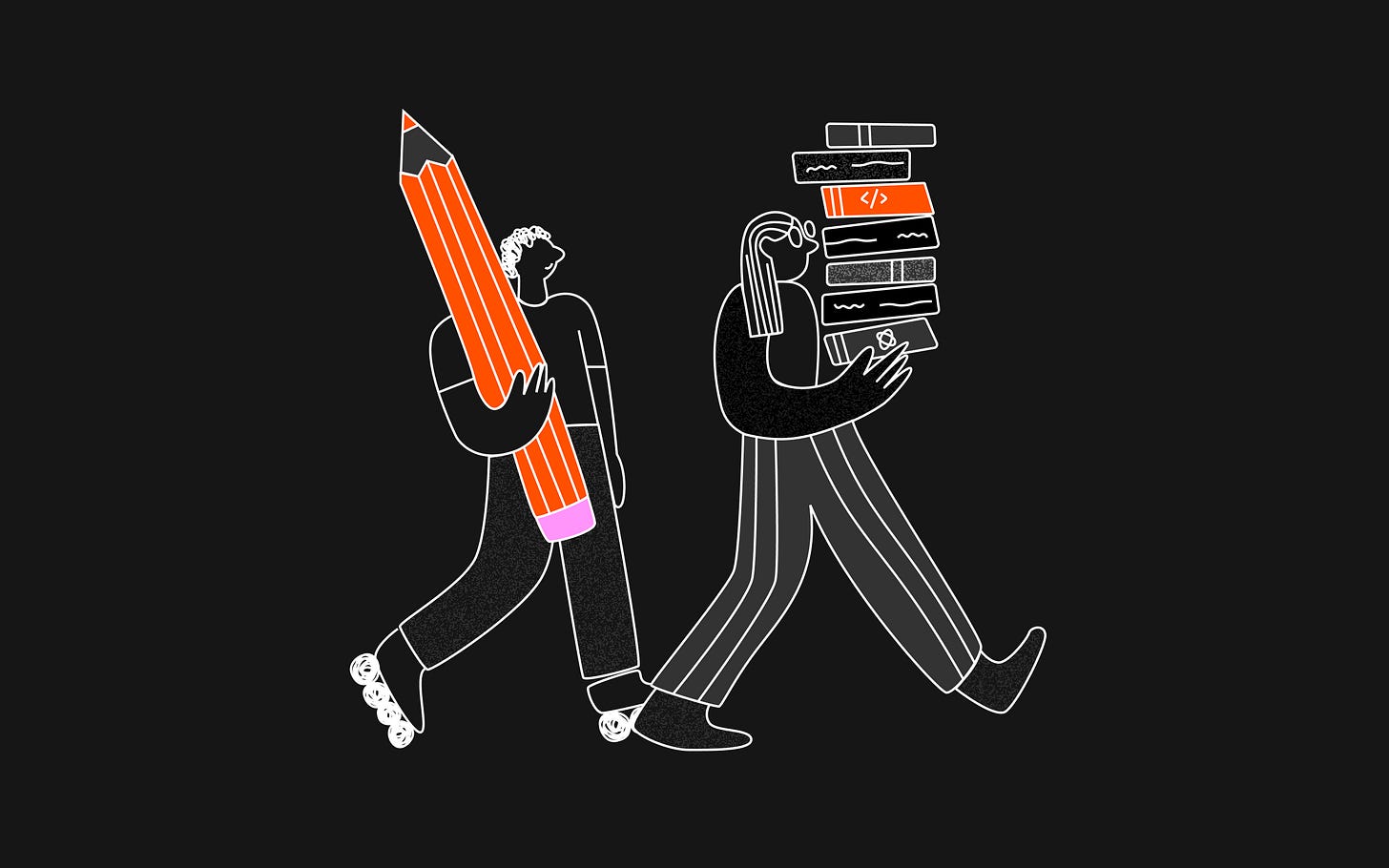Top 5 things designers need to know about developers
To move projects forward, there must be a synergy between the teams in a company. A crucial part of the process is a collaboration between design and dev. Here's what I know about it.
To move projects forward, there must be a synergy between the teams in a company. We already talked about the importance of designer and PM collaboration and ways to improve it. Another crucial part of the process is a collaboration between design and dev.
Both can leverage the mutually beneficial relationship to build products faster, cheaper, and more meaningful. Here's what I know about good design-to-dev collaboration.
Always be clear
The key to any successful relationship is clear communication. It's especially true for the designer-developer collaboration.
Involving developers early in the process creates less friction and helps build understanding and limitations for the project. There should be multiple check-ins between designers and developers during the project to make sure that the project is on the right track.
Having a central place for communication, updates, and the latest status will save you work hours and help make the process more transparent for everybody.
Show, then tell
Designers and developers speak different languages. This usually leads to confusion and poor working relationships. It's crucial to learn to talk to each other's language to build straightforward and robust communication.
When talking about art and code, sometimes it might be hard to describe your goals and intentions for the product. Designers have visuals in their toolkits to help communicate effectively. Illustrate your points by drawing diagrams, using metaphors, and creating mockups and interactive prototypes.
If a picture is worth 1000 words, a prototype is worth 1000 meetings." — Tom & David Kelley, Creative Brothers at IDEO.
Know that not everything is possible
Developers give designers a healthy dose of realism. Not everything that pops into a designer's head will look good in reality. Not everything designers create can be implemented.
Designers who have dev experience are the best at this. They can estimate the possibilities of implementing an idea and accurately predict how it will look and work in reality.
Finally, developers help designers understand the technical limitations currently present in the product.
And even though designers need to push developers to build new things, being realistic is one of the ways to ensure deadlines are met.
Be ready to compromise
The previous point brings us to this piece of advice. Since there might be limitations on the development side, compromise will be crucial to keep the project moving.
Developers might have to push a little more in one direction. Designers might have to step away from another path. You need to come to a happy middle for your requests.
The product will only work if you can make compromises with each other.
Use the right tools
As mentioned in the first point, having the tools that help to make your workflow more efficient and transparent is crucial.
This touches not only collaboration in the form of words, audio, or video. It's also about managing task requests, brainstorming, exchanging feedback, insights, and ideas.
But there's one part of the process that still has great opportunities for transformation. The designer-to-developer handoff has always been a source of frustration and time and money loss.
Designers work in one tool, while developers work in another, making collaboration more difficult. The key to enabling design and development collaboration is providing a single platform that will take care of the handoff, accelerate the speed of delivery, and cut off costs.
Conclusion
Remember that successful products are only built with co-creation. Everyone has the same goal of creating a great product and wants to achieve this as much as you do.


